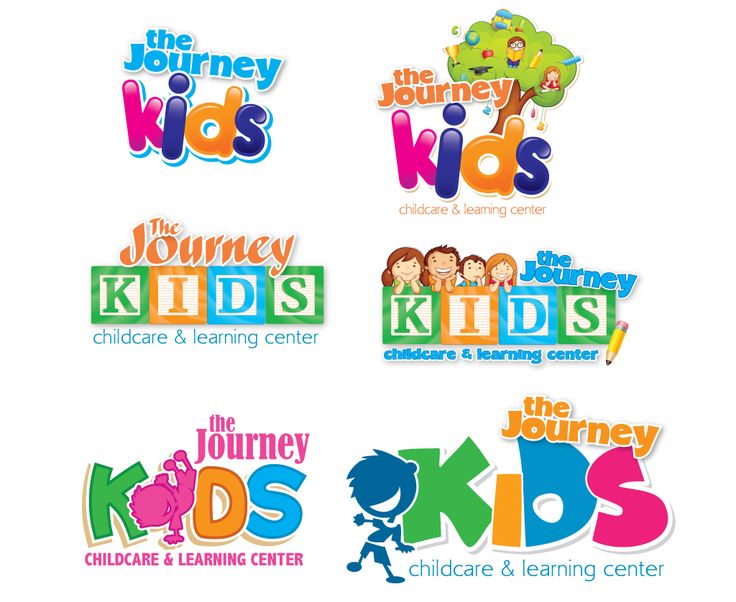Kids r kids childcare: Upstate Preschool DBA Kids ‘R’ Kids
Upstate Preschool DBA Kids ‘R’ Kids
Families can now apply for child care scholarships through the new DSS benefits portal!
Learn More
Child Care Center
Facility Attributes
Operator:
Kori Knisely
Capacity:
272
Facility Hours
| Sunday |
|
|---|---|
| Monday |
|
| Tuesday |
|
| Wednesday |
|
| Thursday |
|
| Friday |
|
| Saturday |
|
Licensing
Licensing Type & Number:
License#: 21914
Issue Date:
2/10/2021
Expiration Date:
2/10/2023
Call your DSS licensing specialist if you have questions:
DSS Licensing Specialist
Moore, Teausha
(864) 250-5568
Facility Review & Complaint Information
(7 records found)
| Severity | Inspection Type | Date | Deficiency Type | Resolved |
|---|---|---|---|---|
| High | Complaint | 12/5/2022 |
Discipline and Behavior Management |
Pending |
| High | Complaint | 10/13/2021 |
Center Definitions |
Yes |
| High | Complaint | 10/13/2021 |
Direct Supervision |
Yes |
| High | Complaint | 10/13/2021 |
Ratios |
Yes |
| High | Complaint | 1/27/2021 |
Direct Supervision |
On Site |
| High | Complaint | 1/27/2021 |
Direct Supervision |
On Site |
| High | Complaint | 1/27/2021 |
Ratios |
On Site |
Inspection Reports
| Inspection Type | Date | Report |
|---|---|---|
| Review | 6/9/2022 |
View Report |
| Review | 2/4/2022 |
View Report |
| Review | 1/28/2022 |
View Report |
| Review | 1/13/2022 |
View Report |
| Review | 1/7/2022 |
View Report |
| Review | 12/22/2021 |
View Report |
| Review | 11/29/2021 |
View Report |
| Complaint | 11/16/2021 |
View Report |
| Complaint | 10/13/2021 |
View Report |
| Review | 8/23/2021 |
View Report |
| Review | 3/23/2021 |
View Report |
| Review | 8/22/2019 |
Note on Deficiencies
Deficiencies are listed in broad categories and are available online for 36 months. We encourage you to contact your region office for an explanation of any of the deficiencies, or for additional information about this facility’s compliance. Resolved “On Site” means that a violation was resolved during the Licensing Specialist’s inspection.
Severity Levels
High:
These are the most serious violations of child care regulations and could pose a risk to the health and safety of children. If you would like an explanation of any of the deficiencies, or would like additional information about this facility’s compliance, please contact your regional office.
Medium:
These are significant violations of child care regulations and could negatively impact the health and safety of children. If you would like an explanation of any of the deficiencies, or would like additional information about this facility’s compliance, please contact your regional office.
Low:
These violations are the least likely to impact health and safety, but they still show that a facility is out of compliance with some child care regulations. If you would like an explanation of any of the deficiencies, or would like additional information about this facility’s compliance, please contact your regional office.
Note on Frequency of Inspections
Centers, Group Homes, and Licensed Family Homes::
In 2014, legislation was passed that changed the number of unannounced visits from two per year to one per year in Child Care Centers, Group Child Care Homes, and Licensed Family Child Care Homes. As a result of this new law, you may see a decrease in the number of deficiencies listed on this website for these types of providers. Unannounced visits are still made in response to a complaint, and visits are scheduled with the facility during the re-licensing process, which occurs every two years.
Registered Family Homes:
Most family homes are registered, not licensed. In 2014, legislation was passed that allows Child Care Licensing to make one unannounced visit to these homes each year. As a result of this new law, you may see an increase in the number of deficiencies listed on this website for Registered Family Child Care Homes. Unannounced visits are still made in response to a complaint. Click here for an overview of each facility and the requirements they must meet according to state law.
Kids R Kids Childcare Inc
Write a Review
About the Provider
Description: Kids R Kids Childcare Inc is a Licensed Group Child Care in Milwaukee WI, with a maximum capacity of 23 children. This child care center helps with children in the age range of 6 Week(s) – 13 Year(s). The provider does not participate in a subsidized child care program.
Additional Information: Nighttime care available.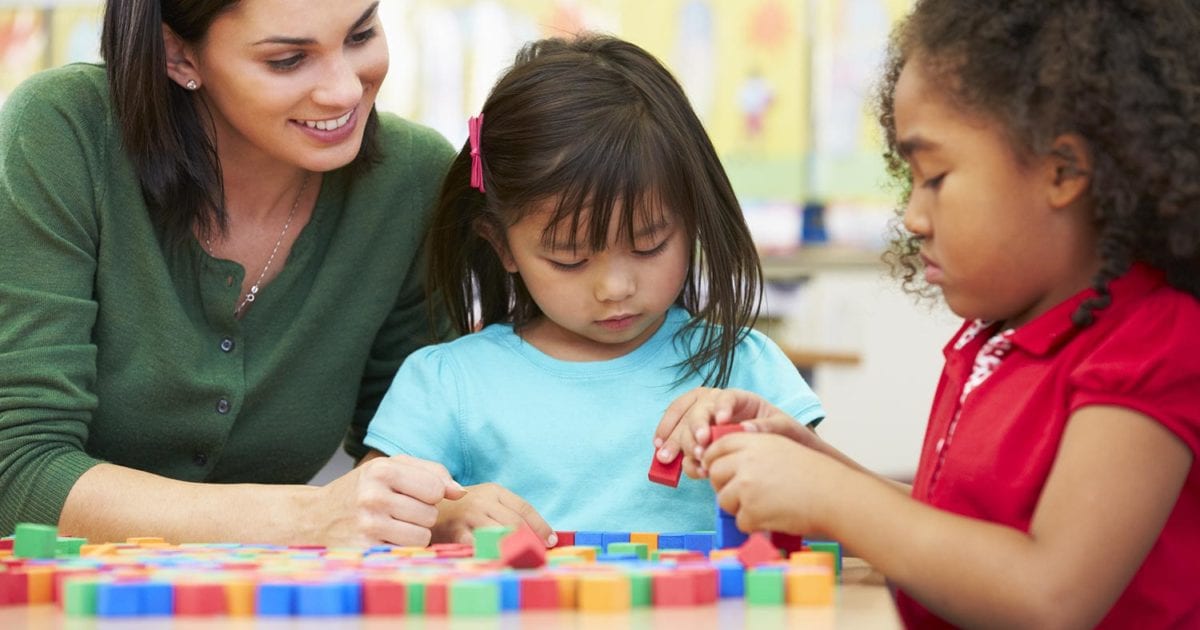
Program and Licensing Details
- License Number:
2001738 - Capacity:
23 - Age Range:
6 Week(s) – 13 Year(s) - YoungStar Rating:
4 - Enrolled in Subsidized Child Care Program:
No - District Office:
Wisconsin Dept of Children and Families (DCF)- Child Care Regulation and Licensing - District Office Phone:
608-266-9314 (Note: This is not the facility phone number.)
Location Map
Inspection/Report History
Pinnacle Pointe Daycare Academy – Union City GA Child Care Learning Center
Where possible, ChildcareCenter provides inspection reports as a service to families. This information is deemed reliable,
but is not guaranteed. We encourage families to contact the daycare provider directly with any questions or concerns,
as the provider may have already addressed some or all issues. Reports can also be verified with your local daycare licensing office.
| Violation Date | Rule Number | Rule Summary |
|---|---|---|
| 2021-06-23 | 251.05(2)(a)2. | Staff Record – Completed Background Check |
| Description: Attestation Form Missing |
||
| 2019-11-25 | 251.04(6)(b) | Current, Accurate Daily Attendance Record |
| Description: The attendance record was filed out when the licensor arrived. Ten children were present. |
||
| 2019-11-25 | 251.07(6)(f)1.b. | Medication Administration – Containers & Labeling |
| Description: Medication was not labeled with the child’s name. |
||
| 2019-11-25 | 251.04(2)(L)1.a. | Monitoring Results Posted |
| Description: The monitoring results from the previous licensing visit dated 2/7/19 was not posted.  |
||
| 2019-11-25 | 251.04(3)(f) | Report – Plan Of Correction |
| Description: A plan of correction for cited violations was not submitted to the department for the licensing visit on 2/7/19. |
||
| 2019-02-07 | 251.05(1)(c) | Cardiopulmonary Resuscitation Training |
| 2019-02-07 | 251.04(6)(a)8. | Child Record – Health Examination |
| Description: Health exams were not on file for all the children at the center. |
||
| 2019-02-07 | 251.04(6)(a)6m. | Child Record – Immunization History |
| Description: Immunizations were not on file for all the children at the center. |
||
| 2019-02-07 | 251.08(2)(b) | Emergency Information In Vehicle |
| 2019-02-07 | 251.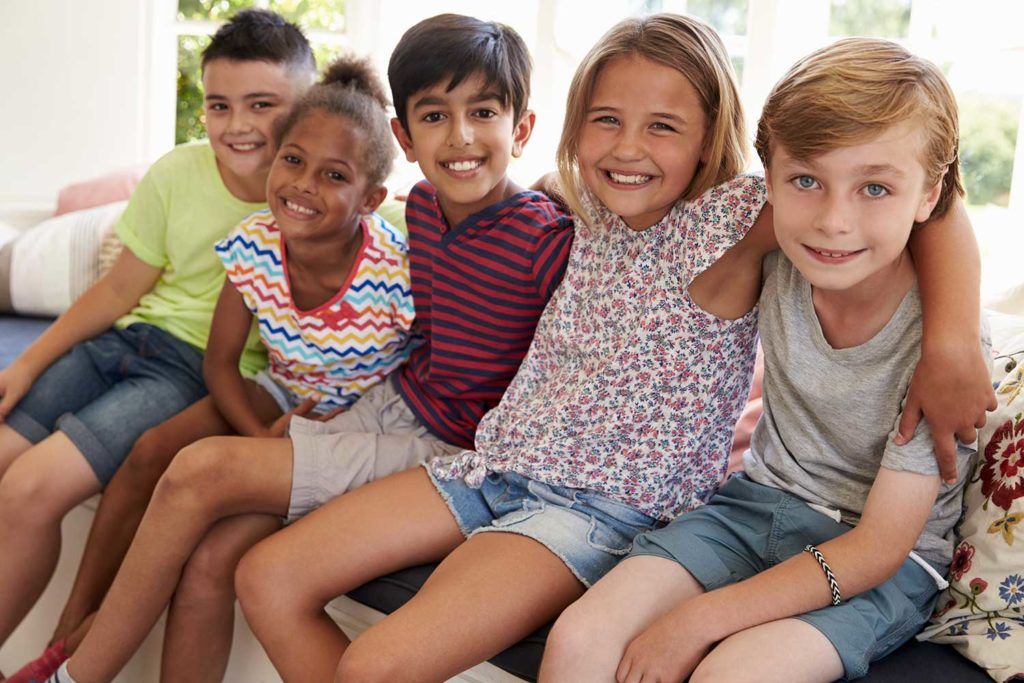 09(1)(k) 09(1)(k) |
Infant & Toddler – Bedding |
| Description: A child under the age of 2 years old was sleeping in a pak n play with a blanket that was not tucked tightly under the mattress. |
||
| 2019-02-07 | 251.04(5)(a)6. | Staff File – Orientation & Continuing Education |
| Description: Documentation of continuing education is not on file for all staff records reviewed. |
||
| 2019-02-07 | 251.04(5)(a)4. | Staff File – Physical Examination Report |
| Description: Staff D does not have a current physical exam and TB test results on file. |
||
| 2018-09-05 | 251.06(7)(a) | Indoor Space – Square Footage Per Child |
| Description: Nine children were being cared for in a classroom that only had enough space for eight children.  |
||
| 2018-09-05 | 251.05(4)(g) | Mixed Age Group With Children Under Age 2 – Group Size |
| Description: On 9-5-2018 at 8:20am there were nine children between the ages of 5 months and 2 1/2 years old in one group. When infants and toddlers are part of a group, the group size may not exceed eight. |
||
| 2018-09-05 | 251.05(4)(i) | Staffing Requirements – 9 Or More Children In Center |
| Description: On 9-5-2018 at 7:30am only one staff person was in the building with nine children; while another staff member sat outside in her car. When nine or more children are in the center there shall be at least two adults available in the center at all times. |
||
If you are a provider and you believe any information is incorrect, please contact us. We will research your concern and make corrections accordingly.
Advertisement
Reviews
Be the first to review this childcare provider.
Write a review about Kids R Kids Childcare Inc. Let other families know what’s great, or what could be improved.
Please read our brief review guidelines to make your review as helpful as possible.
Email address (will not be published):
Display name:
Which best describes your experience?:
Select from belowI have used this provider for more than 6 monthsI have used this provider for less than 6 monthsI have toured this provider’s facility, but have not used its servicesI am the ownerI am an employeeOther
Rating (1=poor, 5=excellent):
Select your Rating1 star2 star3 star4 star5 star
Review Policy:
ChildcareCenter.us does not actively screen or monitor user reviews, nor do we verify or edit content. Reviews reflect
only the opinion of the writer. We ask that users follow our
review guidelines. If you see a review that does not reflect these guidelines, you can email us.
the review and decide the appropriate next step. Please note – we will not remove a review simply because it is
negative. Providers are welcome to respond to parental reviews, however we ask that they identify themselves as
the provider.
Write a Review
Providers in ZIP Code 53212
LEARNING LEADERS Child Development Center
Boys And Girls Club Pieper Hillside
Coa Child Care Center
Lifeways Early Childhood Center
New Horizon Daycare Center
Four Seasons Early Lrng Center Inc
Malaika Early Learning Center
Mps – Carver Clc
St Marcus Child Care
The Nurturing Nook
Johnson Preschool And Lrng Ctr Llc
Auntie Fe Fe’s Child Dev Center
Bhla Llc
C And C Child Development Center
COA RIVERWEST PRE-TEEN PROGRAM
Collins Caring Corner
Dreamland Child Care 4
Fratney K3 Wrap-Around Program
Gateway To Knowledge Lrng Ctr Llc
Gracefully Caring 4 Kidz Llc
Kids R Kids Childcare Inc
Lil Dinks And Bubbles Lrng Academy
Lil Milga Learning Center Llc
Little Giants Learning Academy
Little Leaders Learning Academy
Mps – Fratney Clc
Mps – Gaenslen Clc
Mps – Holmes Clc
Mps – King Safe Place
Mt Zion Child Development Center
Pricillas Child Care Dev Ctr Inc.
Pristine Child Care Center Llc
Superstars Kidz Daycare Llc
The Learning Spot Child Care Center
Tomorrow’s Futr Erly Chldhd Ctr Inc
Unique Kidz Learning Center
Ymca At Messmer Prep
Ymca Sacc At Messmer St Mary
Beautiful Little Creatures 3
Children And Youth Of Esteem Llc
Day To Day Fun Learning
Dynamic Child Care Solutions Llc
Learning At Its Best Child Care Llc
Northcott Neighborhood Hse Day Camp
Developmental care in boarding schools for children with disabilities has become mandatory
National standard of the Russian Federation “Services for the care of children with disabilities” (GOST R 70190-2022) came into force in December 2022
“The adoption of this GOST is difficult to overestimate – now all the principles of care outlined in it will be mandatory for implementation in all orphanages and other state organizations,” said the Center for Curative Pedagogics “Special Childhood” (CLP), whose experts actively participated in the preparation of the standard.
“The standard spells out the basic competencies that people caring for children with TMDD (severe multiple developmental disorders. – Ed.) should have,” explained one of the developers, psychologist Anna Paykova .
According to her, for children with such disorders, everyday experiences become the main context of their life and development environment. Meanwhile, caring for these children can be difficult, tiring, and even traumatic for caregivers. And if a child is looked after inattentively and carelessly, then he spends most of his time in situations that do not develop him and do not teach him anything.
“We urge people who care for children with SMDD: when there is an opportunity (it is clear that the opportunity may not be every time), it is important that the child becomes a participant in what is happening to him to the maximum extent. So that the child understands what is happening to him now and what will happen to him in the next moment.
According to her, it is important that children with disabilities can directly participate in what is happening – for example, if a child can perform some actions when dressing himself, then you need to give him this opportunity. At the same time, with the help of developmental care, it is possible to develop movements in children with severe disabilities.
Developing care also makes life easier for those caring for children with disabilities, so they need to be familiar with its principles, notes Anna Paikova.
“These are the staff of boarding schools, staff of preschool institutions (nannies and kindergarten teachers), as well as nannies working in families with such children,” she explained.
“It is clear that in practice the change in approach will not happen immediately, but now there is a document that answers the question “how to work with children with disabilities ” , a document that can and should be checked and demanded” , – emphasize in the CLP.
You can download the text of the new standard here.
who is entitled to, conditions for receiving payments by families with children under 17
Ekaterina Miroshkina
economist
Author profile
On January 1, 2023, a new allowance for families with children will appear. At first it was called universal, now it is single. A new type of state support will seriously change the system for calculating payments to families with children. And although the principle of appointment is similar to the already existing benefits from 8 to 17 years old, parents need to figure it out again. Now the concepts of “comprehensive means assessment”, “zero income rule”, “children’s living wage” and “property security” will affect more families.
Several reviews will be devoted to the unified allowance for children and pregnant women. This is about the main conditions.
What I will tell you about
- What is the single allowance
- Who is entitled to the single allowance from 2023
- How much is the single allowance paid
- How to calculate the average per capita family income
- Whose income is taken into account in the calculation
- Whose income is taken into account in the calculation when assessing means
- What income is not taken into account for a single benefit
- How property is taken into account for the purpose of a single allowance
- What is the zero income rule
- What reasons confirm the absence of income
- How to apply for a single allowance from 2023
What is a single allowance
is a new monthly allowance state support.
- If you are pregnant – if you register up to 12 weeks.
- For children from birth to 17 years of age.
What benefits will be replaced by a single
| Benefit until 2023 | Size until 2023 | Who appointed | Conditions until 2023 |
|---|---|---|---|
| When registering before 12 weeks of pregnancy | 50% of the subsistence level of the able-bodied population in the region | PFR | Income not more than PM per capita, comprehensive means assessment |
| Care for up to a year and a half unemployed | Fixed amount — 7677.81 Р | PFR | To one of the parents with any income |
| For the first child up to 3 years | 100% of the subsistence minimum for children in the region | Social security – from the budget | Income of not more than two PM for the working-age population in the region, without a comprehensive means test |
| For the second child up to 3 years | 100% of the subsistence minimum for children in the region | PFR – from mother capital | Income of not more than two PM for the working-age population in the region, without a comprehensive means test |
| For the third or subsequent child up to 3 years | 100% of the subsistence minimum for children in the region | Social security – from the budget | In 76 regions, according to their rules |
| For children from 3 to 7 years old | 50, 75 or 100% of the subsistence minimum for children in the region | Social security – from the budget | Income not more than PM per capita, comprehensive means assessment |
| For children from 8 to 17 years old | 50, 75 or 100% of the subsistence minimum for children in the region | PFR | Income not more than PM per capita, comprehensive means assessment |
When registering up to 12 weeks
Pregnancy
Until 2023
50%of the subsistence minimum of the working population in the region
who set
PFR
Conditions up to 2023
NEW more PM per capita, a comprehensive assessment of need
for care to care to care one and a half years unemployed
Amount until 2023
Fixed amount – 7677.
Who appointed
PFR
Conditions until 2023
One of the parents with any income of
for the first child up to 3 years old
Until 2023
100%of the subsistence level for children in the region
who appointed
Social Protection – from the budget
Conditions to 2023
Income of not more than two PM for the working-age population in the region, without a comprehensive means test
For the second child up to 3 years old
Size until 2023
100% of the subsistence minimum for children in the region
who set
PFR – from the Matkapital
Conditions up to 2023
income of not more than two PM for the working -age population in the region, without a comprehensive assessment of need
for a third or subsequent child under 3 years old
Up to 2023
100% of the subsistence minimum for children in the region
Who appointed
Social protection – from the budget
Conditions until 2023
In 76 regions, according to their rules
for children from 3 to 7 years old
Until 2023
50, 75 or 100%of the subsistence minimum for children in the region
Who appointed
Social Protection – from the budget
Conditions up to 2023
income no more than more PM per capita, comprehensive means assessment
For children from 8 to 17 years
Amount until 2023
50, 75 or 100% of the subsistence minimum for children in the region
Who appointed
PFR
Conditions until 2023
Income not more than PM per capita, comprehensive means assessment
This entire list will now replace or combine the single allowance for children and pregnant women.
The amount of the benefit is not fixed, as in some cases now. It will depend on the need of the family and will be 50, 75 or 100% of the subsistence minimum.
The rules will change from 2023, but there will be a transitional period for a few more years with the option to choose the old conditions.
First things first.
So, the family had several benefits with different conditions of assignment. One will appear – with the same.
Who is entitled to a single allowance from 2023
The new allowance will be assigned to citizens of the Russian Federation for children who also have Russian citizenship, taking into account a comprehensive needs assessment. This term combines three conditions:
- The average per capita family income in the billing period is not more than the subsistence level per capita.
- The property of family members is included in the established list. For example, if a family has an apartment and a house, this is not a reason for refusal. But if two cars are a reason, even with a low income.
- Adult family members had earned income or an objective reason for its absence. For example, if the wife is on maternity leave and the husband is not working, the allowance will not be assigned due to the man’s zero income.
Details of each of the three conditions will follow.
Now it is important to understand the essence: now, from the birth of a child, the needs of the family will be taken into account. Until 2023, these rules apply only to maternity benefits and children aged 3 to 7 and 8 to 17 years old.
For example, in 2022, any mother, even if she has never worked, receives a fixed amount of care for up to a year and a half. According to the new rules, family income and property will be taken into account from the birth of a child.
Transition period
Children born before 12/31/2022 can receive benefits under the old rules – at the discretion of the parents. There is a transitional period for them. Therefore, in 2023, a mother will still be able to receive a care allowance or payment for up to 3 years under the same conditions, without a comprehensive means assessment.
In what amount is the single allowance paid
The single allowance will be 50, 75 or 100% of the subsistence minimum in the region. For pregnant women, the minimum for the working-age population is taken as the basis. For children – installed on the child.
The exact amount of the allowance depends on the need of the family.
Single allowance per child
| Subsistence minimum share | Terms of appointment |
|---|---|
| 50% | Basic size |
| 75% | Increased amount – if, when assigning the base amount, the average per capita income did not reach the subsistence level per capita |
| 100% | The maximum amount – if, when an increased amount was assigned, the average per capita income still did not reach the subsistence level per capita |
Control minimum
Conditions for the appointment
50%
Basic size
75%
increased size – if during the appointment of the basic size of the average periraval income did not reach the subsistence minimum for the population of
100% 100% 100%
The maximum amount – if, when assigning an increased amount, the average per capita income still has not reached the subsistence level per capita
Until 2023, payments are assigned according to the same principle for children from 3 to 7 and from 8 to 17 years.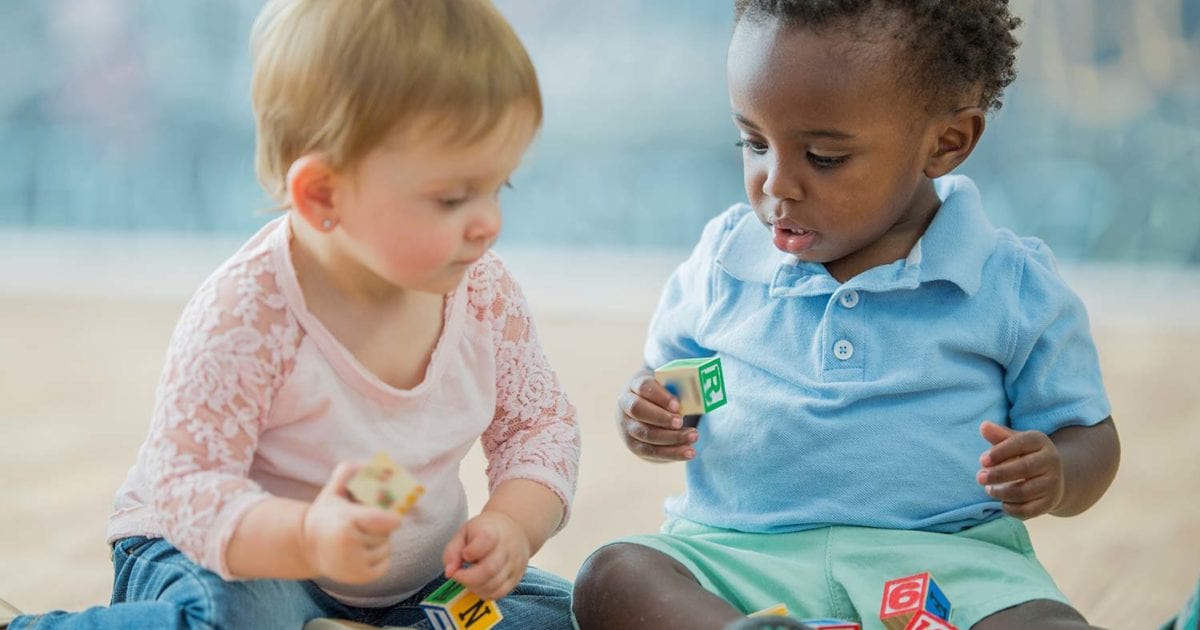
But the amount of benefits for pregnant women and children under 3 years old may change.
Previously, pregnant women could only receive 50% of the living wage. Now they will receive 50, 75 or 100%, that is, the allowance can double.
There were two guaranteed benefits for children under 3 years old:
- up to one and a half years – 7678 R, a fixed amount for non-working parents;
- up to 3 years old – 100% of children’s PM for the first child.
See what happens.
Now, up to 3 years, you can receive 50, 75 or 100% of the subsistence minimum, taking into account a comprehensive means assessment. This means that one unemployed mother, who previously would have received R 7678 for a year and a half, will now easily receive R 14 000 per month for the same child. And another mother, who counted on a fixed minimum amount, may not receive a single allowance, because the family has two cars or her husband has zero income.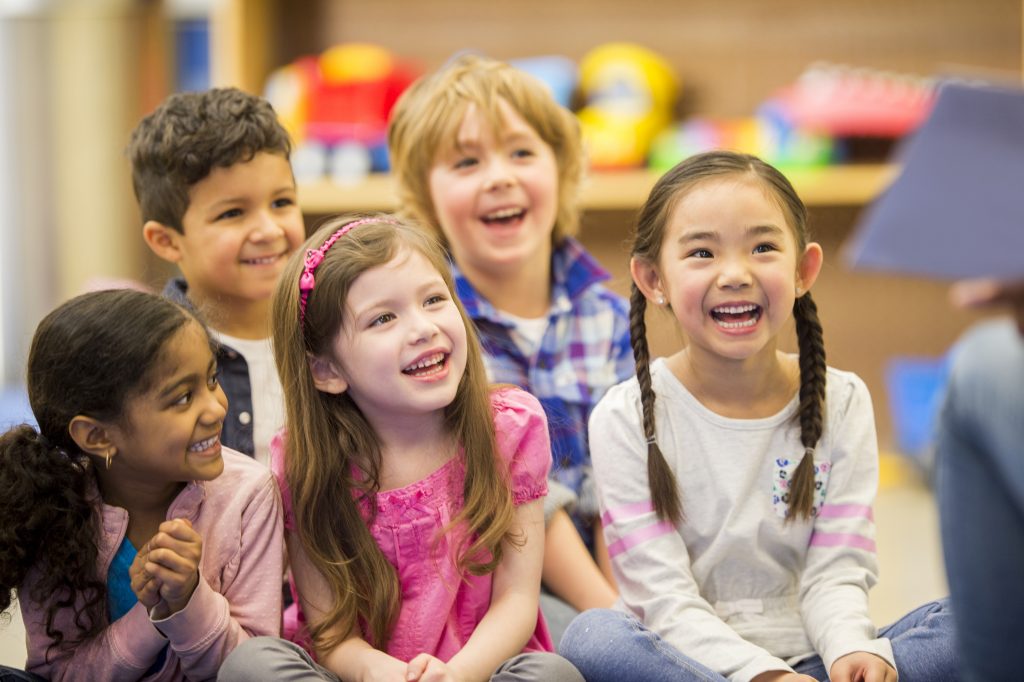
Considering the transition period, you can still choose the old rules. But this will only affect children born before 2023. And for those who will be born in 2023, it will be exactly like this: the need assessment, taking into account income and property, comes to the fore for state support.
Maternal Capital Payments – for any child
Even if a family is not eligible for a single allowance due to property and income, it can apply for up to 3 years of maternity capital payments. Until 2023, they are assigned only to the second child. And from 2023 – for anyone. And without a comprehensive means assessment. The main criterion is the average per capita income of no more than two regional subsistence levels.
There will be a separate analysis about this payment.
How to calculate the average per capita family income
Average per capita income = Income of all family members in the billing period / 12 / Number of family members
And now attention, the most important change: the billing period for a single benefit is 12 months preceding one month to a month appeals.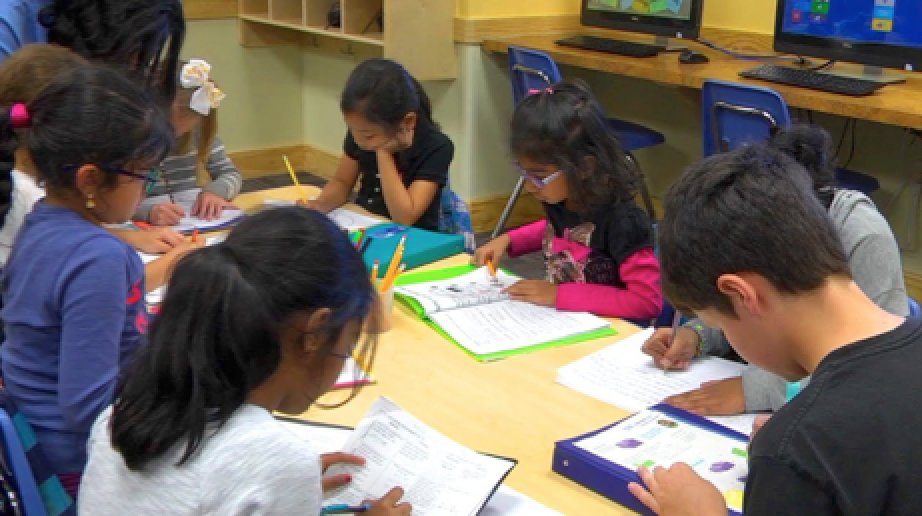
Previously, four months were counted – and parents complained: the financial situation worsened, and the remote settlement period does not give the right to the allowance.
Billing periods when applying in 2023
| Application submission | Income accounting |
|---|---|
| January 2023 | December 2021 – November 2022 |
| February 2023 | January 2022 – December 2022 |
| March 2023 | February 2022 – January 2023 |
| April 2023 | March 2022 – February 2023 |
| May 2023 | April 2022 – March 2023 |
| June 2023 | May 2022 – April 2023 |
| July 2023 | June 2022 – May 2023 |
| August 2023 | July 2022 – June 2023 |
| September 2023 | August 2022 – July 2023 |
| October 2023 | September 2022 – August 2023 |
| November 2023 | October 2022 – September 2023 |
| December 2023 | November 2022 – October 2023 |
submission of the application
9000 2023
March 2022 – February 2023
May 2023
April 2022 – March 2023
June 2023
May 2022 – April 2023
July 2023
June 2022 – May 2023 9000 August 2022 – July 2023
October 2023
September 2022 – August 2023
November 2023
October 2022 – September 2023
December 2023
November 2022 – October 2023
9000 9000 9000 9000
002 When applying in January 2023, income for the period from December 2021 to November 2022 is taken into account.

Whose income is taken into account in the calculation
Total income includes salary and other income: child under 17 years of age.
The family does not include:
- Persons deprived of parental rights to this child.
- Persons on full state support, except for children under guardianship.
- Conscripts without a contract.
- Deprived of liberty or in custody.
- Those under compulsory treatment by court order.
- Declared missing or dead.
- Wanted.
What’s new in Russian laws
And how it will affect your money. A short letter with analysis of new laws – once a month in your mail. Free of charge
What incomes are taken into account when assessing means
According to federal rules, the list is as follows:
- Salary, bonuses, monetary allowance, payment for services – before taxes.
- Pensions and benefits.
- Scholarships and payments on academic leave for medical reasons.
- Alimony received.
- Payment to successors under pension insurance.
- Dividends and interest on operations with securities and derivative financial instruments — net of expenses.
- Interest on bank deposits.
- Compensation for state and public duties.
- Business income less expenses and earmarked grants.
- Income from the sale and rental of property.
- Income from author’s order contracts.
- Income from self-employment and patent – without deducting expenses.
- Retired judges for life.
- One-time allowance upon dismissal from military service.
- Income from sources abroad.
- Income from winnings in lotteries and sweepstakes.
Income is taken into account before taxes. Income in foreign currency is converted into rubles at the exchange rate of the Central Bank on the day of receipt.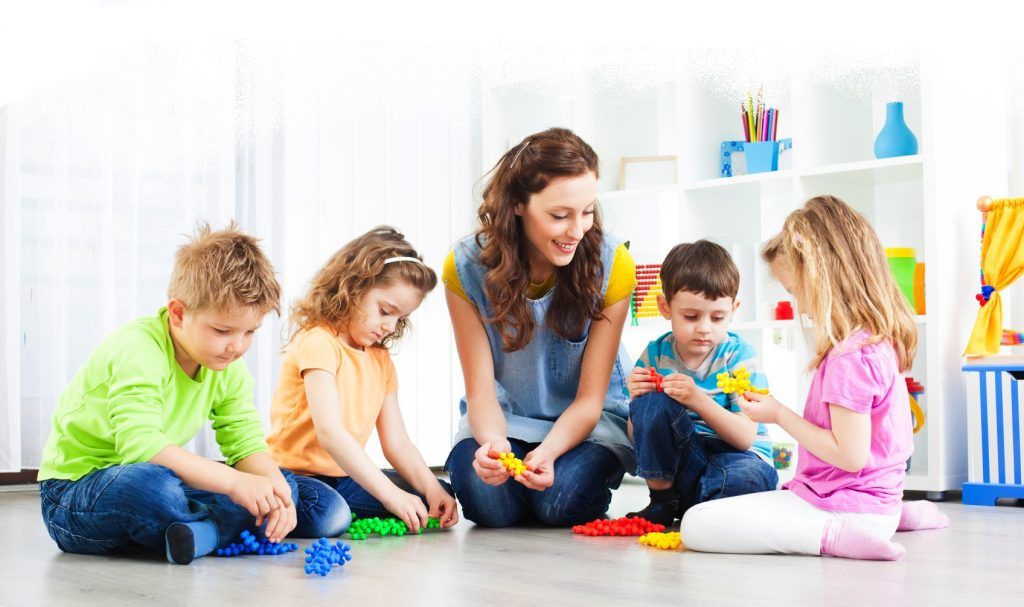
A different list will be set for Moscow. There, the rules will be different – as with payments from 8 to 17 years. In other regions, the general procedure applies.
The movement of money on accounts at the federal level is not taken into account.
What incomes are not taken into account for the single allowance
When assessing the need, the following incomes of family members are not taken into account:
- Monthly allowance for a pregnant woman for past periods.
- Monthly care allowance for up to a year and a half for the unemployed.
- Monthly allowance for children up to 3 years of age.
- Monthly payments from 3 to 7 and from 8 to 17 for previous periods for the same child.
- Single allowance for past periods for the same child.
- One-time financial assistance from local budgets in connection with emergencies or terrorist attacks.
- Payments for the care of children with disabilities and disabled people from childhood of the first group.
- Allowances and alimony for children from 18 or 23 years old – according to the conditions of the regions.
- Payments under the social contract.
- Target funds for full payment for housing or transport within the framework of social support.
- Capital to pay for housing or rehabilitation facilities.
- Regional maternity capital.
- Personal income tax returned with the help of deductions through the employer or on declaration.
- Burial allowance.
- Compensation for damage to life, health and property.
- Compensation for the purchase of rehabilitation equipment for family members with disabilities.
- Compensation for keeping guide dogs.
- Compensation for the installation of a tombstone.
- One-time payments to military personnel and members of their families in compensation for damage to life and health due to hostilities.
- One-time assistance for the treatment of a child.
Paid alimony and mortgage payments are not excluded from family income.
In case of loss of employment, there is no special procedure for accounting for income for 2023. But for the mobilized, there is an exception: all their incomes are not taken into account in the calculation.
How property is taken into account for the purpose of a single allowance
When assessing the need, real estate, transport and interest on deposits are taken into account. If the family has an excess on at least one of the points, the single allowance will be denied.
Family property restrictions
| Type of property | May have | Not included in valuation |
|---|---|---|
| Housing | One apartment of any size. Or several apartments, if the total area for each family member is not more than 24 m².
One house of any area. Or several houses, if each family member has no more than 40 m² |
Uninhabitable.
Occupied by a sick family member if it is not possible to live together. Provided to a large family under a social program or fully paid for with targeted subsidies. Cumulative shares for all family members within 1/3 of the total area. Housing under arrest and with a ban on registration actions. Housing for foster children |
| Non-residential premises | One dacha – with the designation “garden house”.
One garage or parking place. Or two – for a large family, as well as if the family has a person with a disability or a car received under a social program or fully paid for with targeted subsidies. One non-residential premises |
Outbuildings on plots for individual housing construction, private households.
Common property in apartment buildings |
| Plots | Land with a total area of up to 0.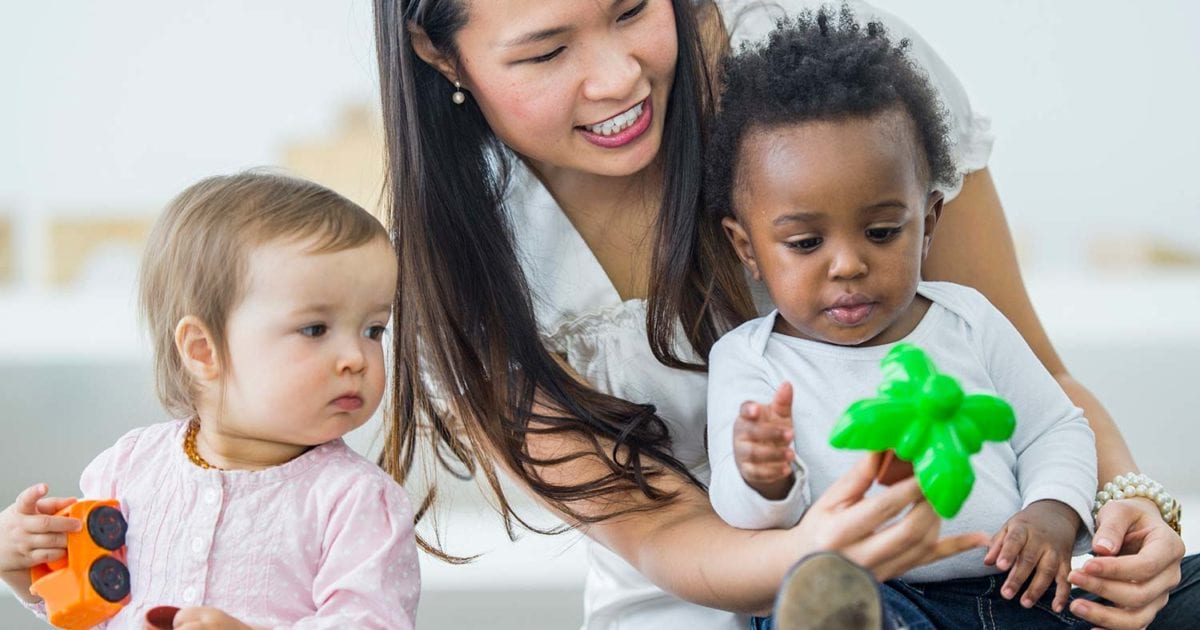 25 hectares if the applicant lives in a city or up to 1 ha if he lives in a village 25 hectares if the applicant lives in a city or up to 1 ha if he lives in a village |
Plots of large families under social support programs or fully paid for with targeted subsidies.
Far East hectare |
| Transport | One car. Or two, if the family has many children, a family member has a disability, or a car was received through state support.
One motorcycle. Or two – under the same conditions as with a car. If the machine has an engine more than 250 hp. With. less than 5 years old, there will be no payout – even if this car is the only one in the family |
For machines with a capacity of 250 hp or more. With. and not older than 5 years, only a family with four or more children can receive a payment.
Transportation of foster children |
| Money | Interest on deposits and bank accounts – no more than 14,375 R in the billing period | Income on deposits closed 6 months before the month of circulation or earlier |
You can have
One apartment of any size.
One house of any size. Or several houses, if each family member has no more than 40 m²
Not included in the assessment
Unfit for habitation.
Occupied by a sick family member if it is not possible to live together.
Provided to a large family under a social program or fully paid for with targeted subsidies.
Cumulative shares for all family members within 1/3 of the total area.
Housing under arrest and with a ban on registration actions.
Housing for foster children
Non-residential premises
Possible to have
One dacha – with the designation “garden house”.
One garage or parking space. Or two – for a large family, as well as if the family has a person with a disability or a car received under a social program or fully paid for with targeted subsidies.
One non-residential premises
Not taken into account when assessing
Outbuildings on plots for individual housing construction, private household
Common property in apartment buildings
Plots
Possible to have
Land with a total area of up to 0.25 hectares if the applicant lives in a city or up to 1 ha if the applicant lives in a village
Not taken into account in the assessment
Far Eastern hectare
Transport
You can have
One car. Or two, if the family has many children, a family member has a disability, or a car was received through state support.
One motorcycle. Or two – under the same conditions as with a car.
If the machine has an engine more than 250 hp. With. less than 5 years old, there will be no payout – even if this car is the only one in the family
Does not count towards the assessment
With.
Transportation of children under guardianship
Money
You can have
Interest on deposits and bank accounts – no more than 14,375 R in the billing period
Not taken into account when assessing
Income from deposits closed 6 months before the month of circulation or earlier
The property of all family members in the aggregate is taken into account. If property restrictions are not met, this is grounds for denial of any income.
For example, a family has an apartment, a house, a dacha, a garage and a car. Property will not be a reason for refusing a single allowance, even if the housing is large.
Another family has two apartments – but each family member has 15 m². This is less than the limit, there are no grounds for refusal.
And the third family has two cars and one mortgaged apartment.
What is the zero income rule
Another important point: a single allowance is assigned only to families that had earned income in the billing period or have a justification for its absence. The list of such good reasons for zero income is approved by the rules.
Here’s how it works in practice:
- Determine the composition of the family. Let’s say two people are over 18 years old – husband and wife.
- We take the billing period. For example, from December 2021 to November 2022.
- Checking spouses’ earnings. The husband has a salary for the entire billing period. Or income from self-employment for November. He does not need to confirm good reasons. But the wife’s income is only benefits, it is not labor income. She will have to justify the lack of income. Suitable, for example, having many children or caring for a child up to 3 years old.
If there is no good reason, the allowance will be denied regardless of income and property.
It is enough to have earned income even in one month of the billing period.
Labor income is any of the following:
- Salary, copyright, remuneration for services.
- Pension and stipend.
- Income of individual entrepreneurs or self-employed.
What reasons confirm the lack of income
Confirm 10 months in advance. For 10 or more months of the billing period, you can have one or more reasons from this list:
- Child care up to 3 years.
- Disability of a child under 18
- Care of the elderly or disabled.
- Full-time education up to 23 years without a scholarship.
- Own treatment or care for a sick child for more than 3 months.
- Military service and 3 months after demobilization.
- Imprisonment and 3 months after release.
- Unemployment accounting – no more than 6 months in the billing period.
Valid reasons are taken into account for a full month, regardless of the date of occurrence. Even if the care for the elderly is issued on October 20, it is considered that the good cause is confirmed for the whole of October.
To have in the billing period or when applying. There are good reasons that you can have at any time in the billing period or at the time of the application:
- Large family status for one of the family members.
- Single parent status of a child under 18 years of age.
- The status of the mobilized.
- Belonging to the indigenous peoples of the North, Siberia and the Far East.
For example, in the billing period, mother had no income. She also could not confirm good reasons for this period. But then the child’s father died, with whom the mother was divorced, and she became the only parent.
Being pregnant. For pregnant women, the zero income rule does not apply under the following conditions:
- The reference period was 6 or more months of pregnancy.
- On the day of application for benefits, the pregnancy was 12 weeks or more.
This means that when applying later than 12 weeks, a woman will not be refused in any case due to zero income. But for other reasons – they can.
How to apply for a single benefit from 2023
Perhaps at the end of December, a form for preliminary submission of applications will appear on public services. Until she is gone. In any case, it will be possible to send an application only from January 1. In 2022, a single allowance has not yet been assigned, but you can apply for those that are in effect now.
An application for a single allowance from 2023 can be submitted:
- through public services;
- in social fund client services;
- at the MFC.











 If there is no good reason, the allowance will be denied regardless of income and property.
If there is no good reason, the allowance will be denied regardless of income and property. 
